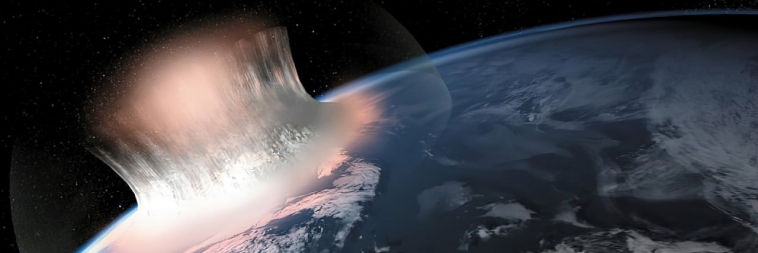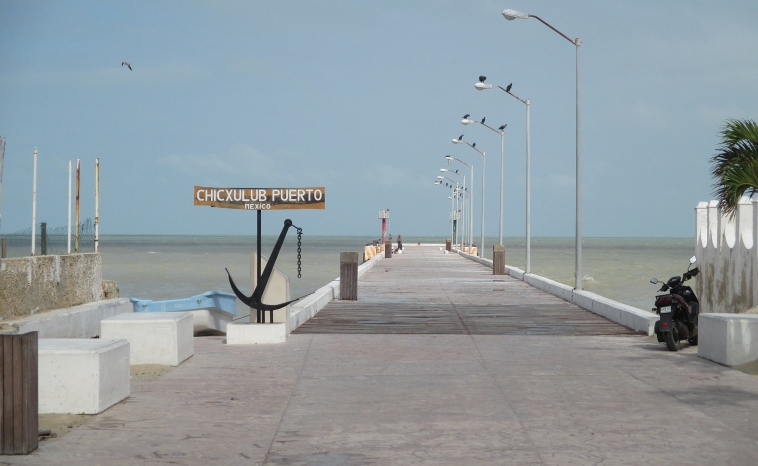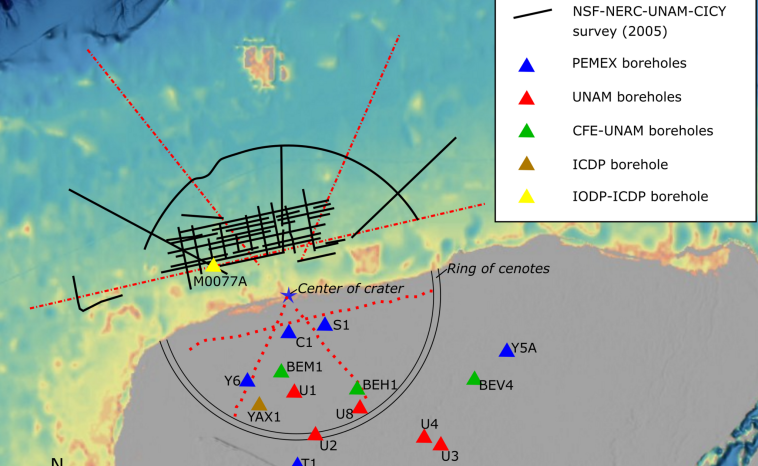What Is the Chicxulub Crater?

Dive into the story of the Chicxulub crater! Learn about its formation, the cataclysmic impact, and how it reshaped life on our planet.
When you’re looking for the most dramatic, life-altering moments in our planet’s history, you don’t need to look much further than the Chicxulub crater. Nestled beneath the Yucatán Peninsula in Mexico, Chicxulub is an ancient impact site that’s captivated scientists and enthusiasts alike for years. But more importantly, the crater represents an event that figuratively and literally reshaped the course of life here on Earth.
In this article, we’ll take a closer look at the fascinating story of Chicxulub, including its discovery, formation, and effects on Terran life.
The Discovery of Chicxulub Crater
In the late 1970s, geophysicists Antonio Camargo and Glen Penfield were on an exploratory mission to find oil in Mexico’s Yucatán Peninsula region. But instead, they stumbled upon a colossal structure that we would later recognise as the Chicxulub crater. Initially, they received scepticism from some in the geological community. However, over time, their findings gained credibility, with a series of subsequent studies confirming the crater’s significance. As research progressed, scientists would uncover a buried treasure of geological and astronomical data that told a story of an impact event that shaped Earth’s history.
Chicxulub is mostly located offshore, so much of its area is covered. In fact, the crater measures about 150 kilometres in diameter, making it one of the largest impact sites on the planet. But more important than Chicxulub’s physical dimensions is the impact (no pun intended!) that it had on Earth’s life. You see, Chicxulub’s formation is strongly connected to the catastrophic event that most scientists believe led to the mass extinction of the dinosaurs. As a result, Chicxulub shares a fascinating connection to Earth’s violent past and also played a huge role in shaping the evolution of life on the planet.
The Chicxulub Impact Event
Around 66 million years ago, a colossal asteroid—estimated to be somewhere between 10 and 15 kilometres wide—hurtled towards Earth with a velocity of about 20 kilometres per second. Upon impact, the tremendous force released energy equivalent to billions of atomic bombs. The resulting explosion was so powerful that it vaporised large amounts of rock and unleashed shockwaves that resounded for hundreds of kilometres.
Aside from the initial explosion, there were also a number of hugely destructive aftereffects. The impact generated massive tsunamis, overwhelming coastal areas. What’s more, vast amounts of dust and aerosols climbed high into the atmosphere. This debris blocked sunlight for an extended period, effectively resulting in a “nuclear winter”. During this time, climate patterns experienced disruption, with a severe and dramatic drop in temperatures and photosynthesis rates.
As you might imagine, this series of unimaginable events weren’t great news for life. In fact, the initial destruction and altered ecosystems led to the extinction of approximately 75% of all species, including the dinosaurs. Today, scientists recognise the Chicxulub event as the Cretaceous-Paleogene (K-Pg) extinction, marking the border between the two periods.
But while this was definitely not a great day to be a dinosaur, we do have a lot to thank the Chicxulub impact for. The demise of the “terrible lizards” opened the door for mammals to take centre stage. Ultimately, this would pave the way for humans to evolve, becoming Earth’s dominant species.
Chicxulub Crater Geological Features
Today, Chicxulub boasts some unique geological features that have piqued the interest of astronomers and geologists alike. The ancient impact site has a striking multi-ring basin, a common feature of larger impact craters. This formation indicates a complex process involving immense pressure and extreme heat, as you might expect following such a massive impact.
Using advanced imaging techniques like satellite radar and 3D modelling, recent studies have revealed intricate details about the crater’s structure. Among these features is the peak ring—a circle of mountains that formed after the rebound and collapse of the Earth’s crust in the aftermath of the impact.
Current Research and Discoveries
Chicxulub continues to be a pivotal area of research for scientists, who are working to uncover new information about the significant geological site. Despite its discovery occurring in the 1970s, it’s only been in relatively recent years that scientists have uncovered Chicxulub’s true significance. In fact, it wasn’t until 2010 that a peer-reviewed study concluded Chicxulub was the cause of the Cretaceous-Paleogene (K-Pg) extinction.
In more recent years, extensive drilling into the crater’s peak ring has revealed fascinating layers of shocked quartz and melted rock. These findings enhance our understanding of the colossal forces involved in the impact and provide insights into the conditions that immediately followed the event.
Final Thoughts on the Chicxulub Crater
Chicxulub is a window into Earth’s tumultuous past, reminding us of the forces that have shaped our world – and the threats that lurk in our Solar System and beyond. Its study continues to produce valuable insights that can increase our knowledge of planetary science and the delicate balance of life on Earth. And as research continues to progress, we can hopefully anticipate new discoveries that will further unravel the mysteries of the Chicxulub crater.

If the fascinating story of the Chicxulub crater inspires you to learn more about what lies beyond our atmosphere, then why not try out the OSR’s fantastic One Million Stars web app? Visit it today to go on a galactic journey and immerse yourself in the wonders of our universe!



